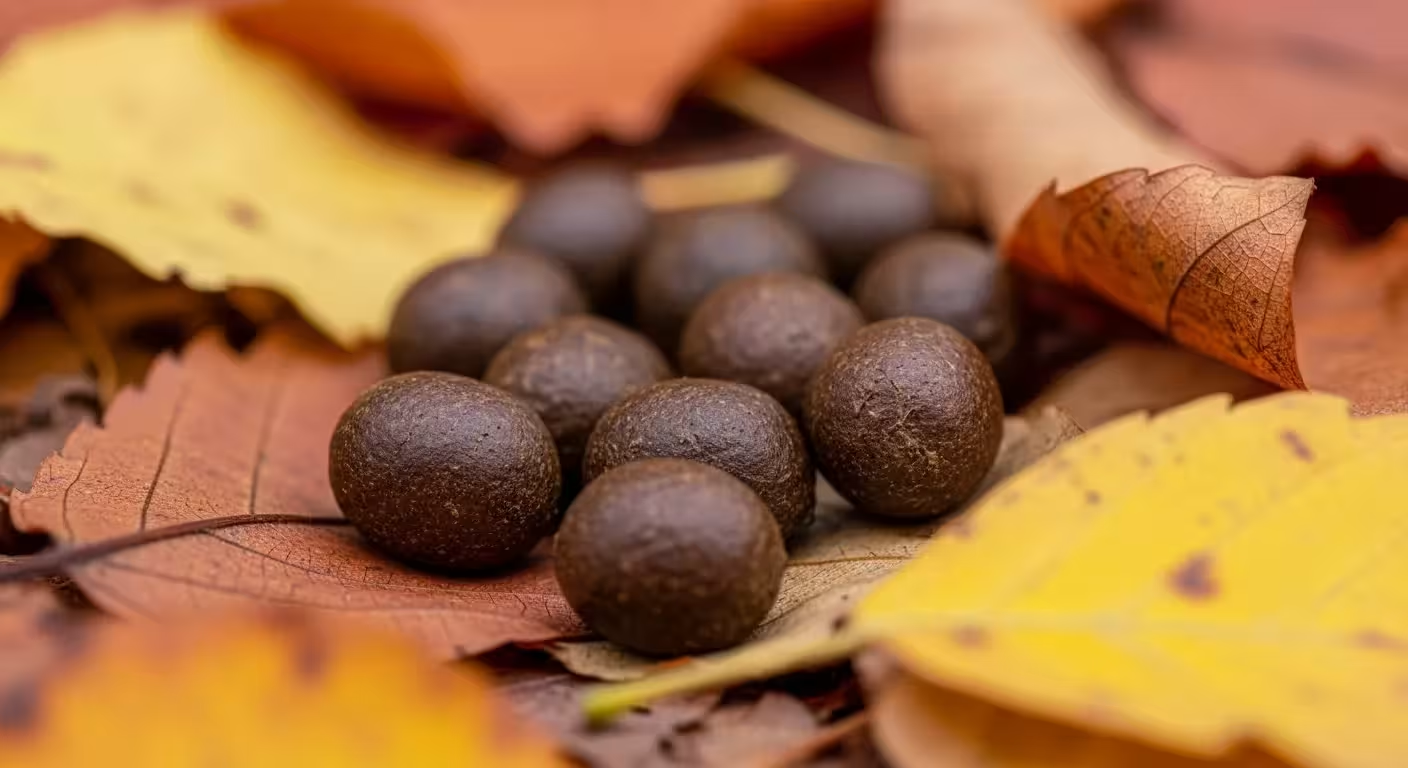
Beyond the Print: Interpreting Other Wildlife Signs
A footprint is just one clue. A truly observant naturalist learns to spot the other signs that animals leave behind. These signs complete the story, offering insights into an animal’s diet, habits, and social life.
Scat and Droppings
While not the most glamorous subject, an animal’s droppings, or scat, are an information-rich sign. Scat can reveal what an animal has been eating, which is a powerful clue to its identity. Always observe scat from a distance and never handle it directly, as it can contain parasites and pathogens.
Herbivore Scat: Plant-eaters like deer and rabbits leave distinct, pellet-like droppings. Deer scat consists of piles of dark, round or oblong pellets, similar in size to chocolate-covered raisins. Rabbit scat is smaller, harder, and perfectly spherical, like peas.
Carnivore Scat: The scat of meat-eaters like coyotes and foxes is often rope-like or tubular. It is typically twisted and tapered at the ends and frequently contains visible hair, fur, and bone fragments. Its color can vary widely depending on the meal.
Omnivore Scat: Animals that eat both plants and animals, like raccoons and bears, leave variable scat. Raccoon scat is tubular and often contains visible seeds, berries, or insect parts. It is often found in specific locations called latrines.
Gnaws, Chews, and Rubs
The way animals use their teeth and antlers on vegetation leaves behind durable signs.
Rodent and Rabbit Chews: Look for the paired grooves left by the incisors of squirrels on nuts or the clean, 45-degree angled snip on a twig where a rabbit has been feeding. Beavers leave the most dramatic sign: large tree stumps gnawed into a distinct conical point.
Deer Rubs and Scrapes: In the fall, male deer rub their antlers against small trees and saplings to shed their velvet and mark their territory. This scrapes away the bark, leaving a visible and lasting sign. They also make “scrapes” on the ground by pawing away leaves to expose bare earth, which they then mark with scent.
Nests, Burrows, and Shelters
Where an animal lives is a final piece of the puzzle. Recognizing their homes can confirm an identification and offers a chance to observe from a very safe distance.
Nests and Dreys: Birds build intricate nests in trees and shrubs, but so do some mammals. The large, messy bundles of leaves high up in a tree’s branches are often squirrel nests, also known as dreys.
Burrows and Dens: A hole in the ground can belong to many animals. Large burrows with a substantial mound of excavated dirt often belong to groundhogs (woodchucks). Smaller holes might belong to chipmunks or voles. A den under a porch or shed could be used by a skunk, raccoon, or opossum.
Ethical Reminder: It is critically important to never disturb a nest, burrow, or den. Getting too close can cause a parent to abandon its young, and it can provoke a defensive attack. Observe these homes from a significant distance using binoculars.















